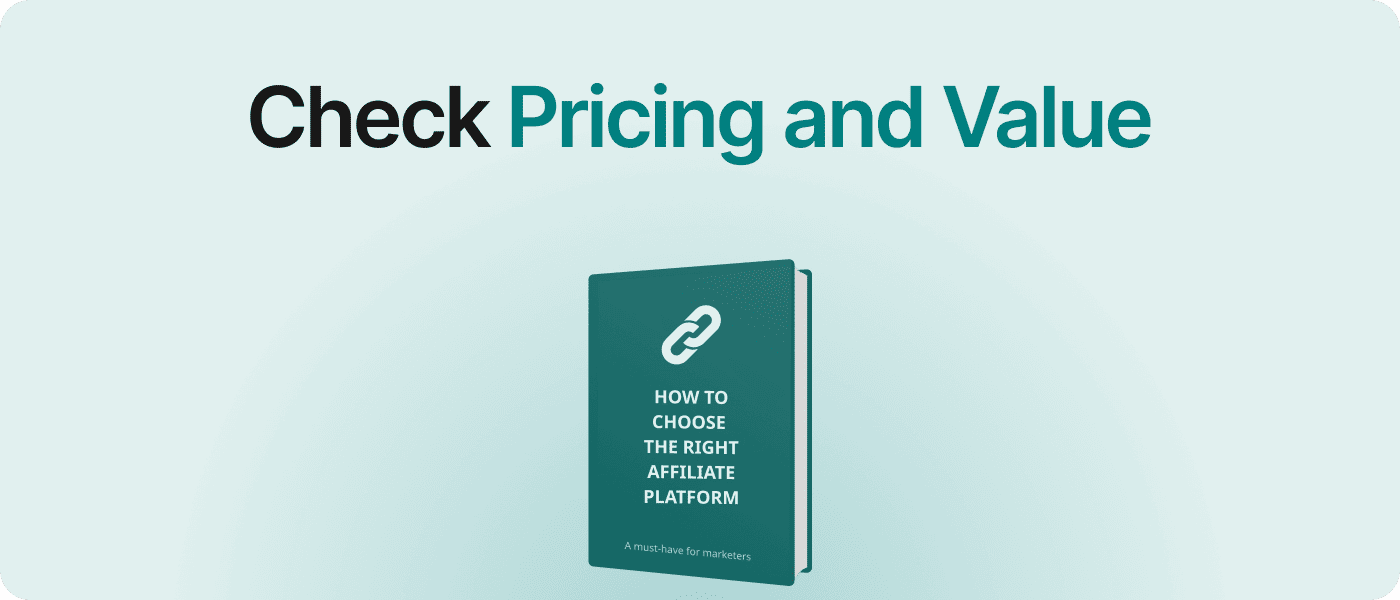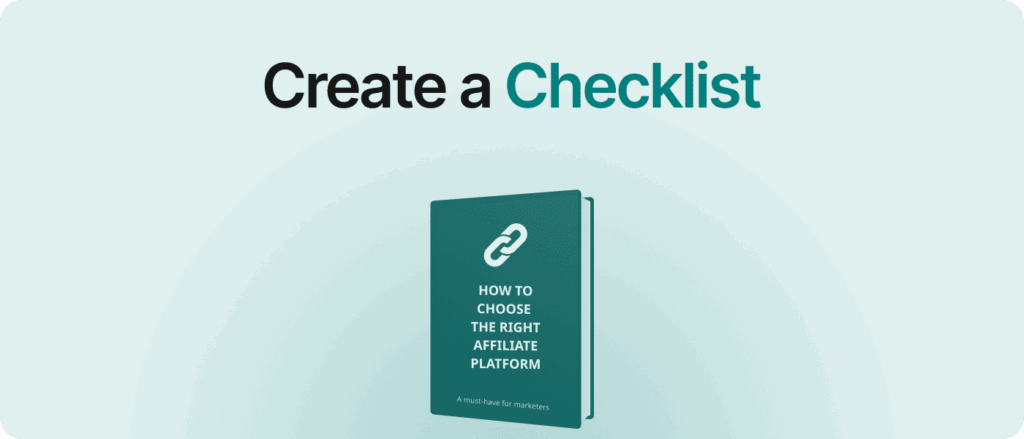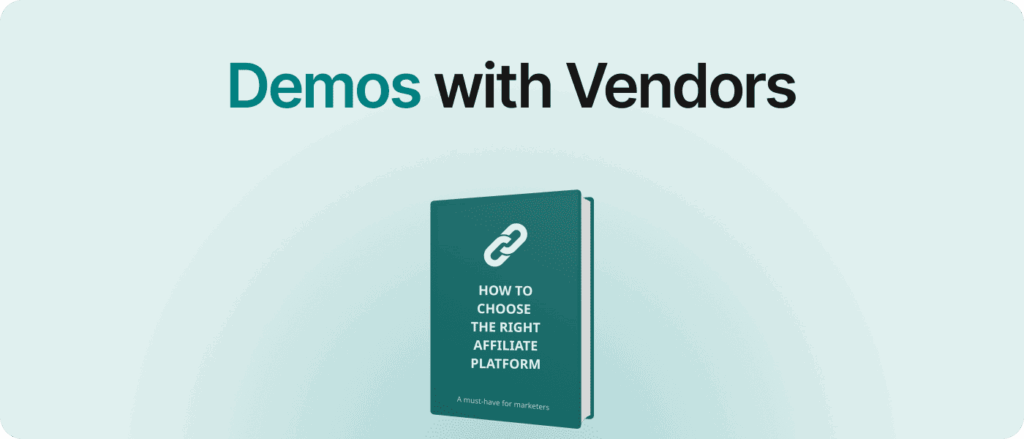Introduction
Pricing isn’t just about the numbers – it’s about understanding what you’re really paying for and whether the platform delivers enough value to justify the cost. Sure, you want something affordable, but cutting corners could mean missing out on critical features or scalability down the road.
This step is all about gathering and organizing pricing information so you can see the full picture: what it costs today, what it might cost a year or two from now, and whether it aligns with the value it provides. This is part of a series on how to pick the right platform for your needs.
Platform Pick 1: Win Stakeholder Support
Platform Pick 2: Create a Checklist
Platform Pick 3: Create a Feature Comparison Table
Platform Pick 4: Define Your Needs Clearly
Platform Pick 5: Hunt for the Right Platform
Platform Pick 6: Send Out Requests for Proposals
Platform Pick 7: Demos with Vendors
Platform Pick 8: Check Pricing and Value
Platform Pick 9: Choose Your Top Favorites
Platform Pick 10: Business, Legal, and IT Prep
Platform Pick 11: Integrate and Test it
Platform Pick 12: Rollout
Ready? Let’s dive in.
The Affiliate Platform Guide
Everything you need to choose the right affiliate platform in one place. Download the complete guide and keep it as your handy reference.

Step 1: Gather Pricing Details
Before making any decisions, you need a complete picture of the platform’s costs – not just for today, but for the future as well. Here’s how to ensure you get all the details:
Ask for a Detailed Breakdown
When reaching out to vendors, request a clear and thorough pricing breakdown. Make sure it includes:
- Base Costs: Subscription fees or license costs.
- Extra Charges: Additional fees for extra users, transactions, or advanced features.
- One-Time Fees: Setup fees, onboarding, or training costs.
- Scaling Costs: Costs associated with higher usage volumes (e.g., per 1,000 transactions or leads).
Plan for the Future
Pricing today is only part of the equation. Ask vendors for cost projections based on your expected growth:
- What would the cost look like at your current volumes?
- How would pricing change in 1 year, assuming growth in traffic or transactions?
- What would it cost in 2 years, if your business scales further?
This ensures you’re not caught off guard by unexpected expenses as your business evolves.
Organize Pricing Details
Once you’ve gathered pricing information, it’s time to organize it in a way that’s easy to compare across platforms. The best way to do this? Use the Pricing sheet in your Features Table.
Add Pricing to the Table
The Pricing sheet is already set up to help you track costs alongside features. Here’s what to include for each platform:
- Base Costs: The starting price for using the platform.
- Extra Charges: Fees for additional users, transactions, or premium features.
- Scaling Costs: Costs projected for 1-2 years based on your expected growth.
- One-Time Fees: Any setup, onboarding, or training expenses.
By filling in the Pricing sheet, you’ll keep all the essential information in one place, making it easier to evaluate both features and costs at the same time.
Compare and Highlight Key Details
Use the sheet to note any standout points, such as:
- Which platform offers the most competitive pricing at your current volumes.
- How costs scale over time and whether they align with your growth plans.
- Any unexpected or hidden fees that could impact the total cost.
Evaluate Value for Money
Once you’ve calculated the Total Cost of Ownership (TCO), it’s time to assess whether each platform offers value that matches its price tag. This step goes beyond costs – it’s about determining which platform gives you the best overall value.
Match Pricing to Features
Compare each platform’s pricing with its capabilities. Look for:
- Platforms that excel in must-have features while staying reasonably priced.
- Any features unique to a platform that justify a higher cost.
Consider Scalability and Future Needs
Evaluate how well each platform’s pricing aligns with your long-term growth. A tool that’s affordable now but skyrockets in cost as you scale may not be the right fit. On the flip side, a slightly more expensive platform that handles scaling smoothly could be a better investment.
Assess Overall ROI
Think about the return on investment each platform offers:
- Will it save time or reduce costs in other areas (e.g., automation, analytics)?
- Does it have features that could help you generate more revenue or attract affiliates?
- How does its usability and efficiency impact your operations?
Expect Compromises
Don’t expect to find the platform with the best features at the lowest price – it’s rare, if not impossible. Instead, focus on finding the best value for your money. Compromises may be necessary, so prioritize platforms that strike a good balance between features, scalability, and cost.
Where to next
Explore Our Guide to Choosing the Best Affiliate Platform
-

Platform Pick: How to choose the right Affiliate Platform
We know it’s not easy. Choosing the right affiliate platform can…
-

Platform Pick 1: Win Stakeholder Support
Feeling like your affiliate marketing channel needs a boost, or…
-
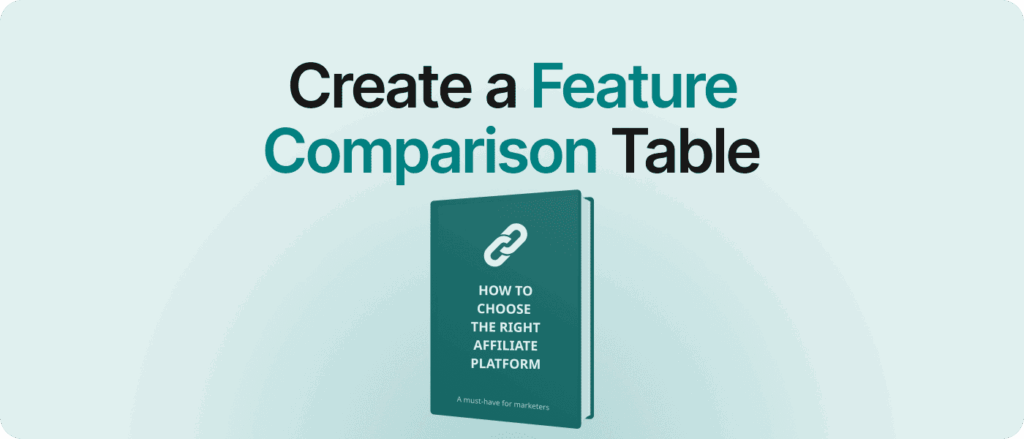
Platform Pick 3: Create a Feature Comparison Table
You’re here because you want the best tool for your…
-

Platform Pick 4: Defining Your Needs Clearly
Let’s face it – nobody knows your business better than…
-

Platform Pick 5: Hunt for the Right Platform
You’ve nailed down your needs and built your Feature Comparison…
-
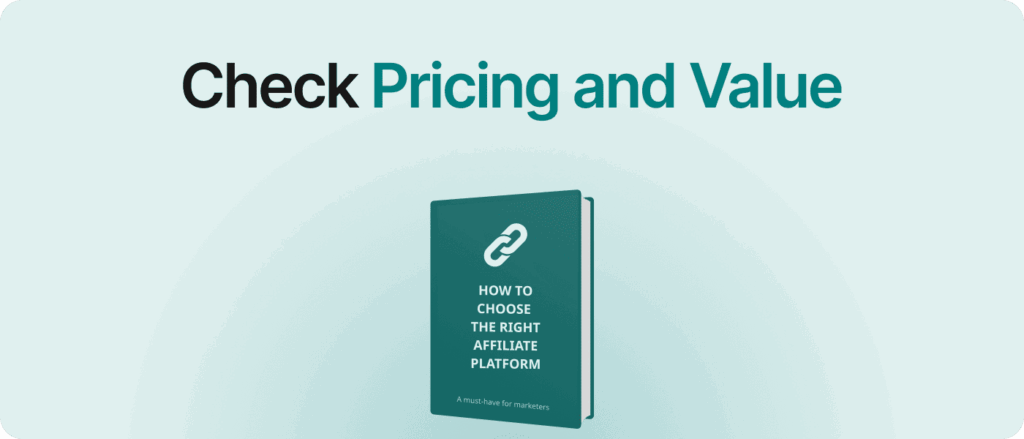
Platform Pick 8: Check Pricing and Value
Pricing isn’t just about the numbers – it’s about understanding…
-

Platform Pick 9: Choose Your Top Favorites
You’ve done the legwork – built your Feature Table, evaluated…
-

Platform Pick 10: Business, Legal, and IT Prep
Now that you’ve narrowed down your platform choice, it’s time…
-
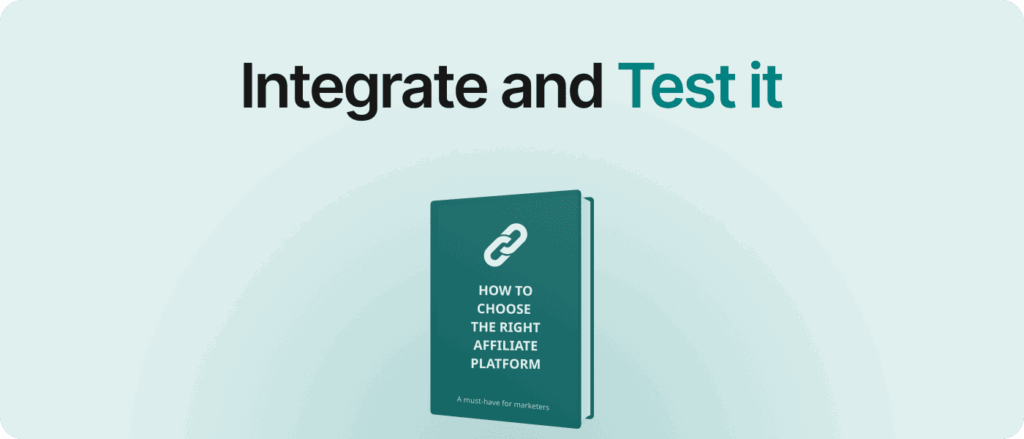
Platform Pick 11: Integrate and Test it
When it comes to affiliate marketing, tracking clicks and leads…
